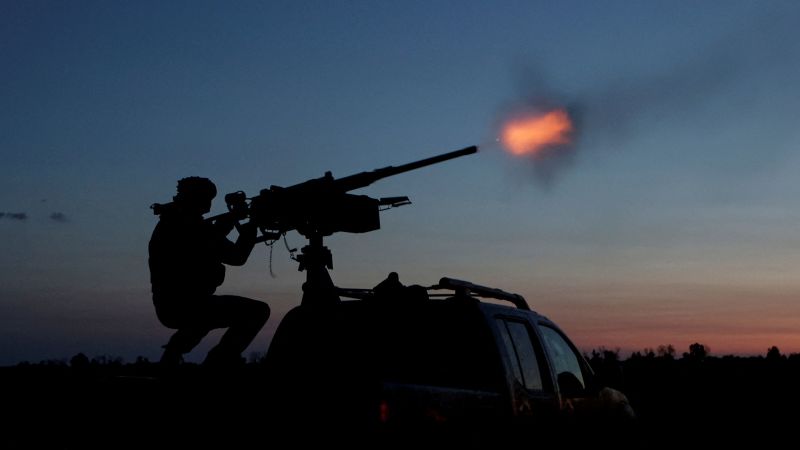The Shift in U.S. Defense Priorities: From Ukraine to the Middle East
Introduction to the Reshuffling
Recently, the Pentagon made headlines by notifying Congress of a significant change in its defense allocation. The U.S. military is redirecting vital anti-drone technologies planed for Ukraine to bolster Air Force units stationed in the Middle East. This decision, revealed in communications obtained by CNN, highlights the evolving landscape of U.S. defense priorities.
A Response to Changing Global Threats
The shift in focus reflects broader strategic adjustments under President Donald Trump’s administration, emphasizing the Middle East and the Pacific. U.S. stockpiles of certain defense components are increasingly under strain, necessitating this reallocation. While Ukraine continues to face severe threats from Russian forces, the U.S. military’s operations in the Middle East have also become crucial, particularly in response to Iranian activities and threats from Houthi rebels in Yemen.
Understanding the Technology at Stake
The technology in question, specifically proximity fuzes for rockets, plays a pivotal role in enhancing Ukraine’s defense capabilities against Russian drones. Designed to trigger an explosion when a rocket nears its target, these fuzes significantly increase the effectiveness of missile strikes against aerial threats. Originally procured through the Ukraine Security Assistance Initiative (USAI), they were intended to fortify Ukraine’s defenses during a period of intense conflict first ignited by Russia’s annexation of Crimea in 2014.
Legislative Communication and Defense Directives
The redirection of these fuzes was executed under the direction of Secretary of Defense Pete Hegseth. A correspondence dated May 29 and addressed to both the Senate and House Armed Services Committees framed this change as a “Secretary of Defense Identified Urgent Issue.” This calls attention to the U.S. military’s urgent need to address immediate threats, even if it means reallocating resources from existing commitments.
The Impact on U.S.-Ukraine Relations
While the immediate effects of this diversion remain to be seen, the implications for Ukraine’s defense landscape cannot be understated. The proximity fuzes dramatically improve the lethality of Ukrainian rockets, potentially tipping the balance in skirmishes against Russian aerial assets. As the U.S. addresses its own military challenges in the Middle East, the Ukrainian forces now find themselves in a precarious position, reliant on older systems without these advanced capabilities.
A Growing Threat Landscape in the Middle East
In recent months, there has been a marked increase in resources being reallocated to the Middle East. This includes not just anti-drone technology, but a variety of air defense systems previously stationed in the Indo-Pacific Command. The urgency of the situation has been propagated by escalating threats from Iran, which has fostered non-state adversaries like the Houthi rebels in Yemen. The U.S. military’s response has been to bolster its readiness and defensive posture in the region.
Conclusion: The Complexity of Defense Strategies
The Pentagon’s decision to redirect essential technology underscores the complexities of modern military strategy. With concurrent threats in various global theaters, the balancing act of allocating resources wisely has never been more critical. U.S. forces in the Middle East are also contending with drone capabilities from adversaries, leading to a shared need for advanced defense technologies. As these dynamics continue to unfold, the ramifications for international alliances and regional stability will likely be significant.


